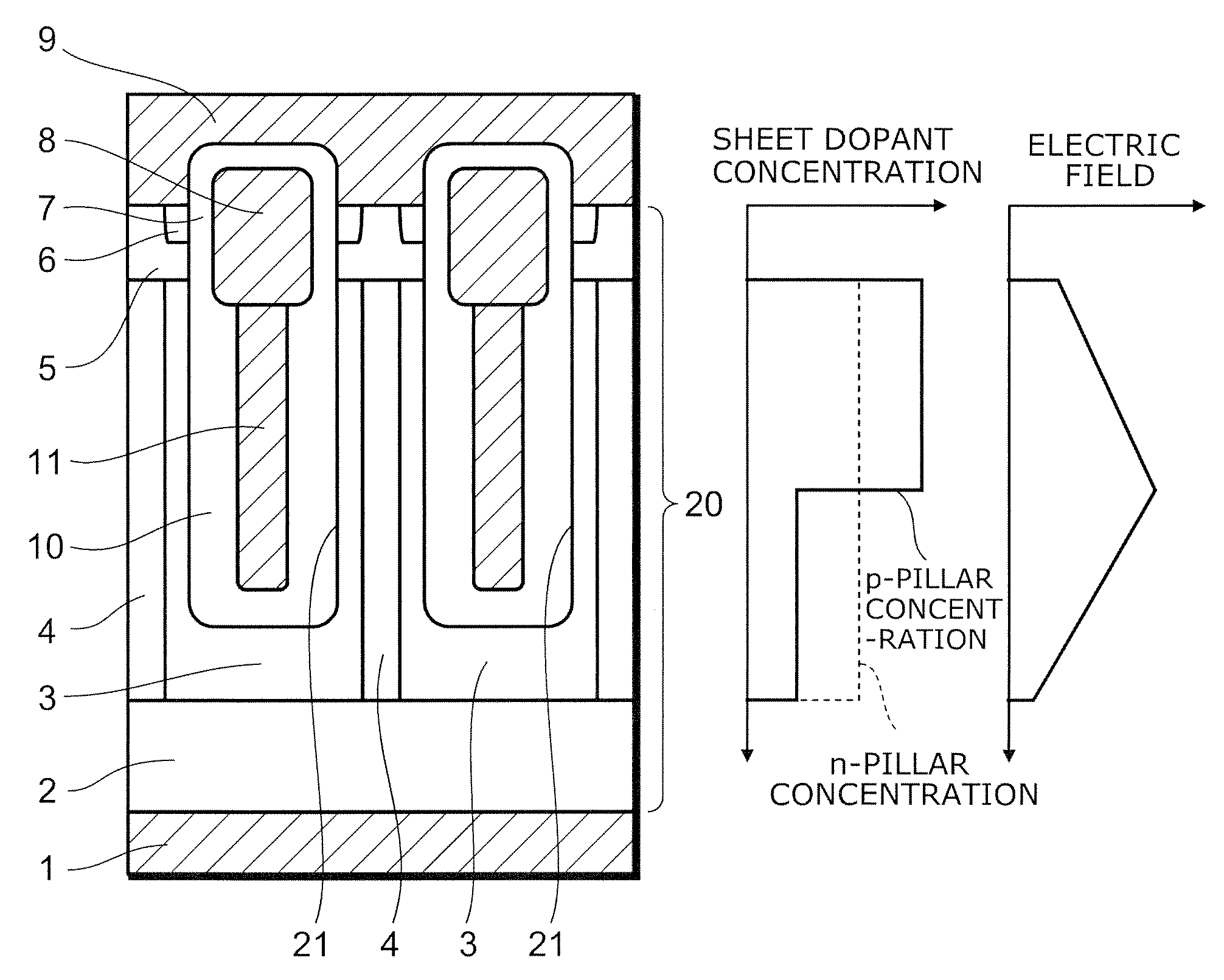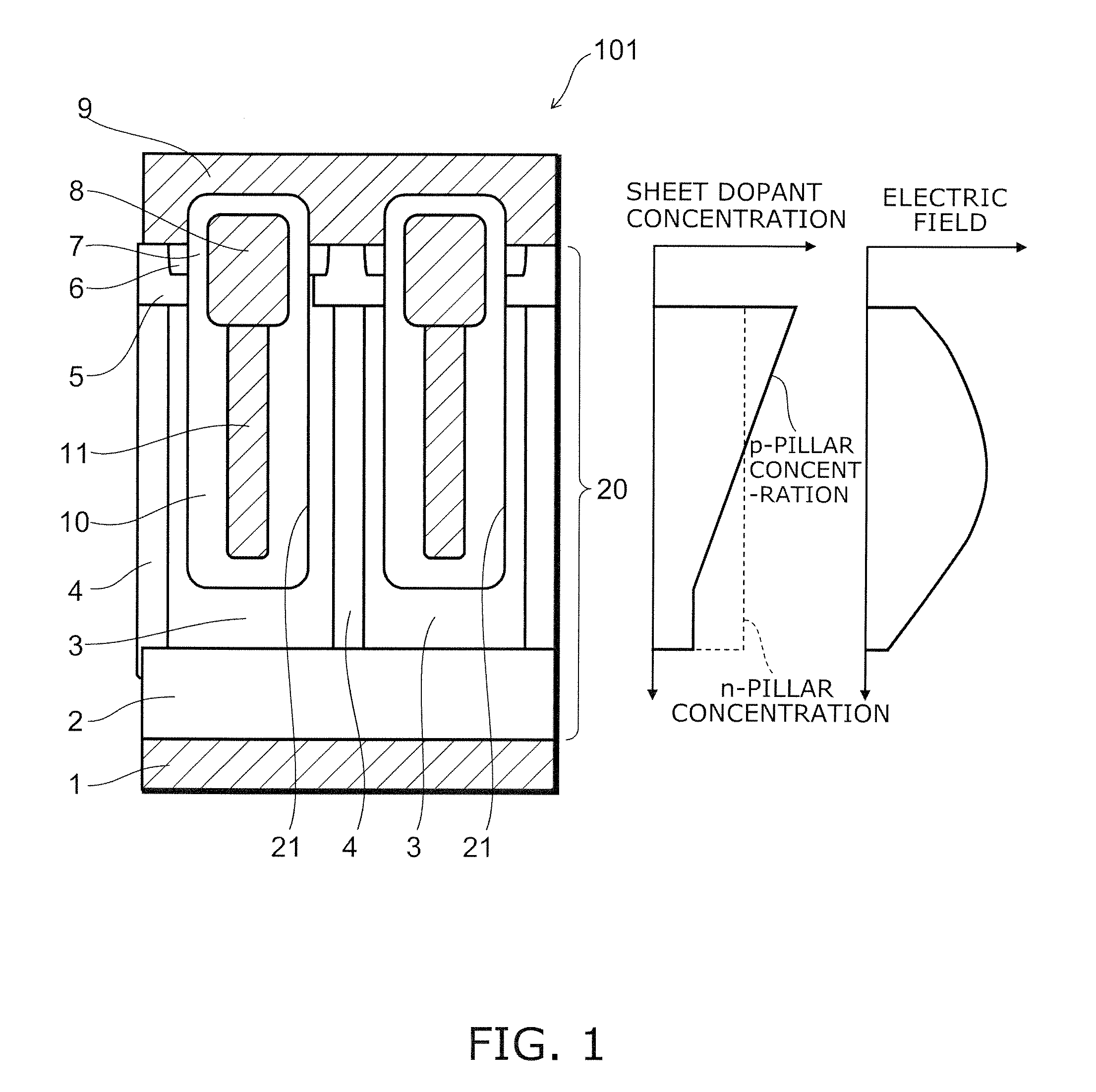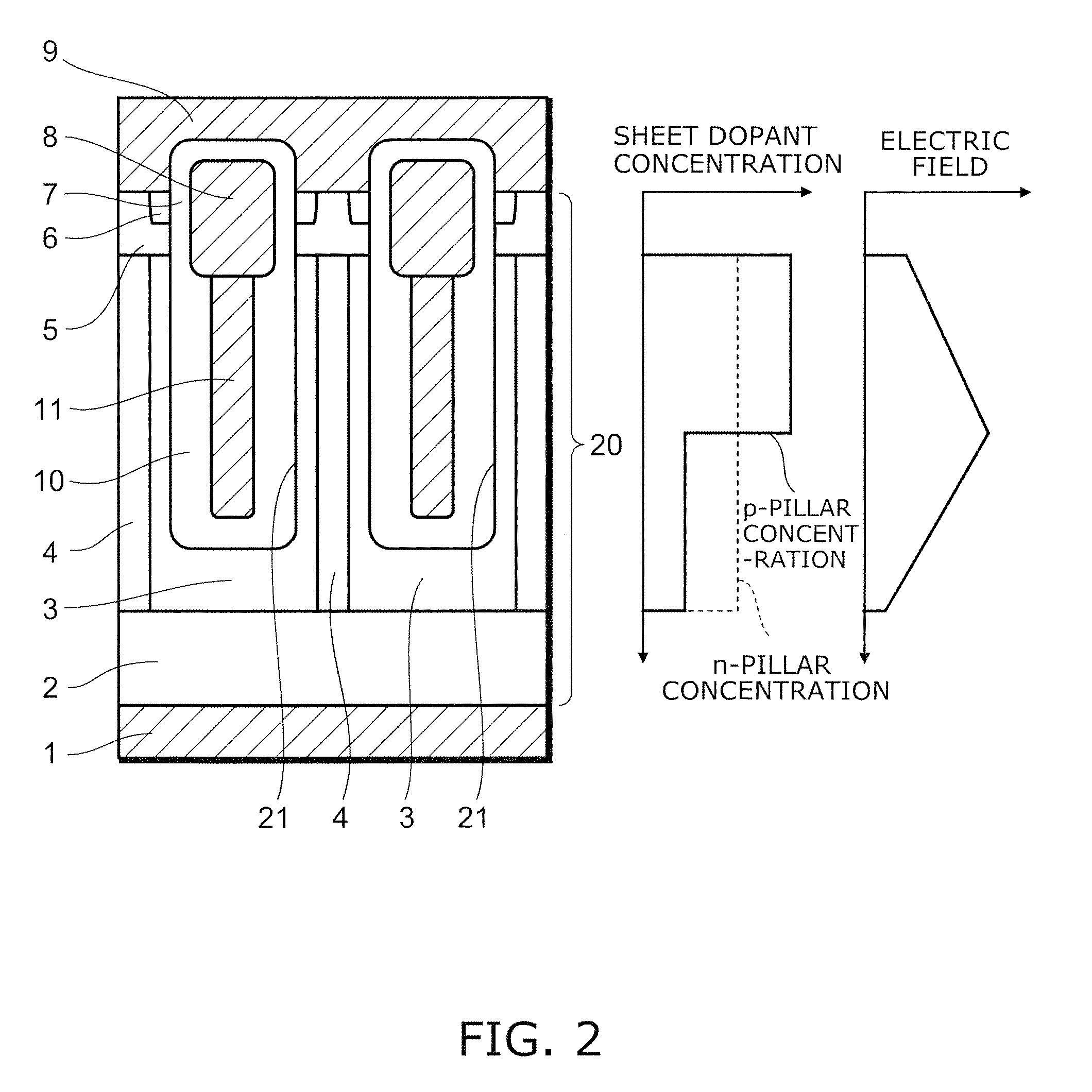Power semiconductor device
a technology of semiconductor devices and super junctions, applied in semiconductor devices, semiconductor/solid-state device details, electrical apparatus, etc., can solve the problems of high processing difficulty, easy depletion of super junction structures at a lower voltage, and trade-off between device breakdown voltage and breakdown voltag
- Summary
- Abstract
- Description
- Claims
- Application Information
AI Technical Summary
Benefits of technology
Problems solved by technology
Method used
Image
Examples
first embodiment
[0038]FIG. 1 shows a cross-sectional view schematically illustrating a power MOSFET according to a first embodiment of the invention, and schematic graphs illustrating sheet dopant concentration and electric field strength in its pillar layers in correlation with position along the depth direction.
[0039]It is noted that FIG. 1 shows only the cell section of the power MOSFET. The same also applies to FIGS. 2 to 17 described below. The term “sheet dopant concentration” in the pillar layer refers to a value given by the product of dopant concentration and pillar width at an arbitrary position along the depth direction of the pillar layer.
[0040]As shown in FIG. 1, the power MOSFET 101 according to this embodiment includes a semiconductor substrate 20, which is illustratively an n-type silicon substrate. An n+-drain layer 2 serving as a first semiconductor layer is formed in the lower portion of the semiconductor substrate 20. A drain electrode 1 serving as a first main electrode is prov...
second embodiment
[0067]FIG. 6 shows a cross-sectional view schematically illustrating a power MOSFET according to a second embodiment of the invention, and schematic graphs illustrating sheet dopant concentration and electric field strength in its pillar layers in correlation with position along the depth direction.
[0068]In FIG. 6, the detailed description of the same elements as those in FIG. 1 is omitted, and only different elements are described here.
[0069]As shown in FIG. 6, in the power MOSFET 102 according to this embodiment, the trench 21 is formed so as to enter the boundary portion between the n-pillar layer 3 and the p-pillar layer 4. Thus only one of the n-pillar layer 3 and the p-pillar layer 4 exists in each portion of the drift layer between the trenches 21. As compared with the first embodiment described above, the trench 21 is shallower, formed only halfway through the drift layer. Furthermore, the p-pillar layer 4 is not in contact with the n+-drain layer 2, but the p-pillar layer 3...
third embodiment
[0078]FIG. 8 shows a cross-sectional view schematically illustrating a power MOSFET according to a third embodiment of the invention, and schematic graphs illustrating sheet dopant concentration and electric field strength in its pillar layers in correlation with position along the depth direction.
[0079]In FIG. 8, the detailed description of the same elements as those in FIG. 1 is omitted, and only different elements are described here.
[0080]As shown in FIG. 8, in the power MOSFET 103 according to this embodiment, the width of the buried field plate electrode 11 varies along the depth direction in its lower portion, thinned downward. On the other hand, the width of the trench 21 is constant along the depth direction. Hence the thickness of the buried insulating film 10 varies along the depth direction, being constant and as thin as the gate insulating film 7 in the upper portion of the trench 21, but thickened downward in the lower portion thereof. The n-pillar concentration and the...
PUM
 Login to View More
Login to View More Abstract
Description
Claims
Application Information
 Login to View More
Login to View More - R&D
- Intellectual Property
- Life Sciences
- Materials
- Tech Scout
- Unparalleled Data Quality
- Higher Quality Content
- 60% Fewer Hallucinations
Browse by: Latest US Patents, China's latest patents, Technical Efficacy Thesaurus, Application Domain, Technology Topic, Popular Technical Reports.
© 2025 PatSnap. All rights reserved.Legal|Privacy policy|Modern Slavery Act Transparency Statement|Sitemap|About US| Contact US: help@patsnap.com



